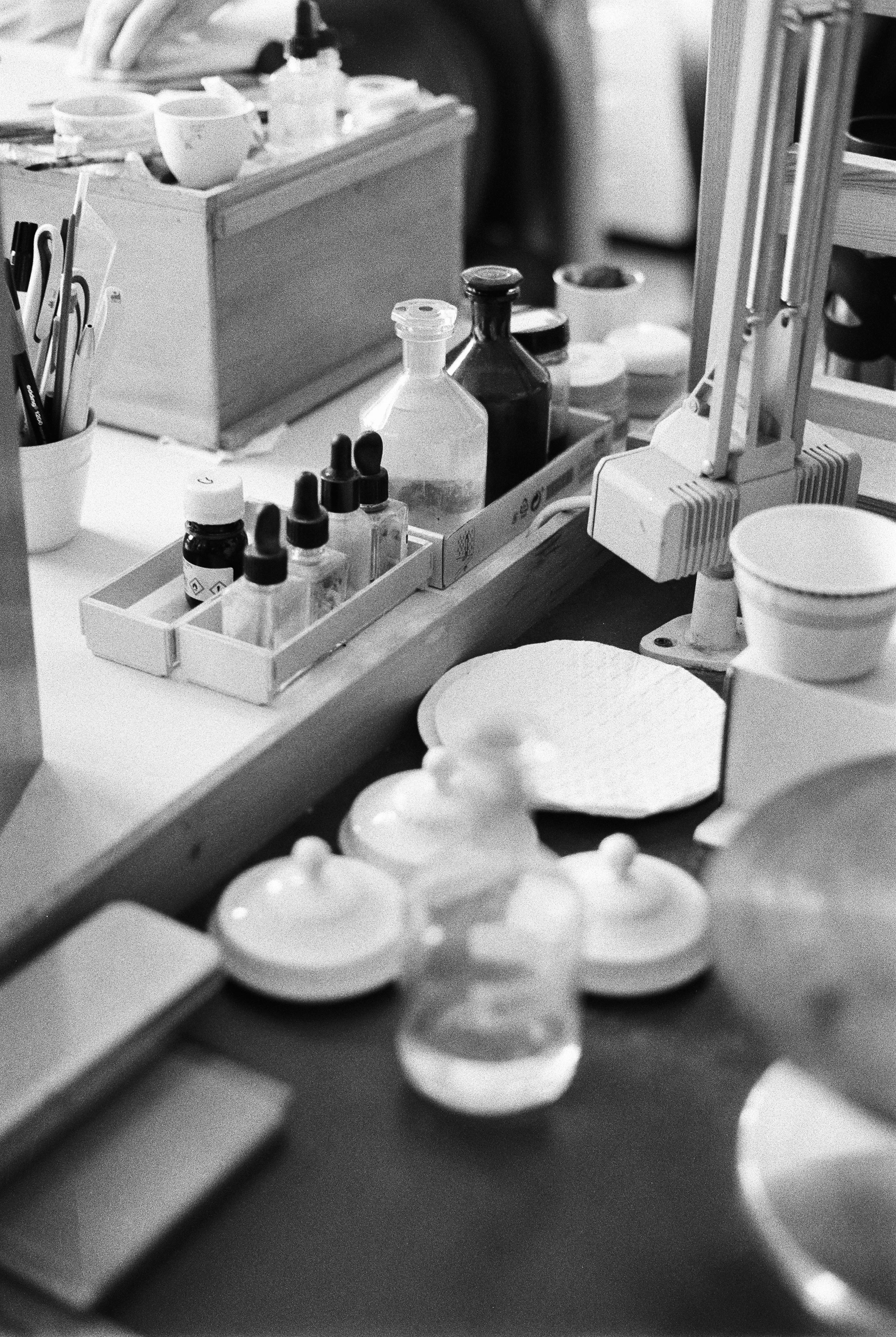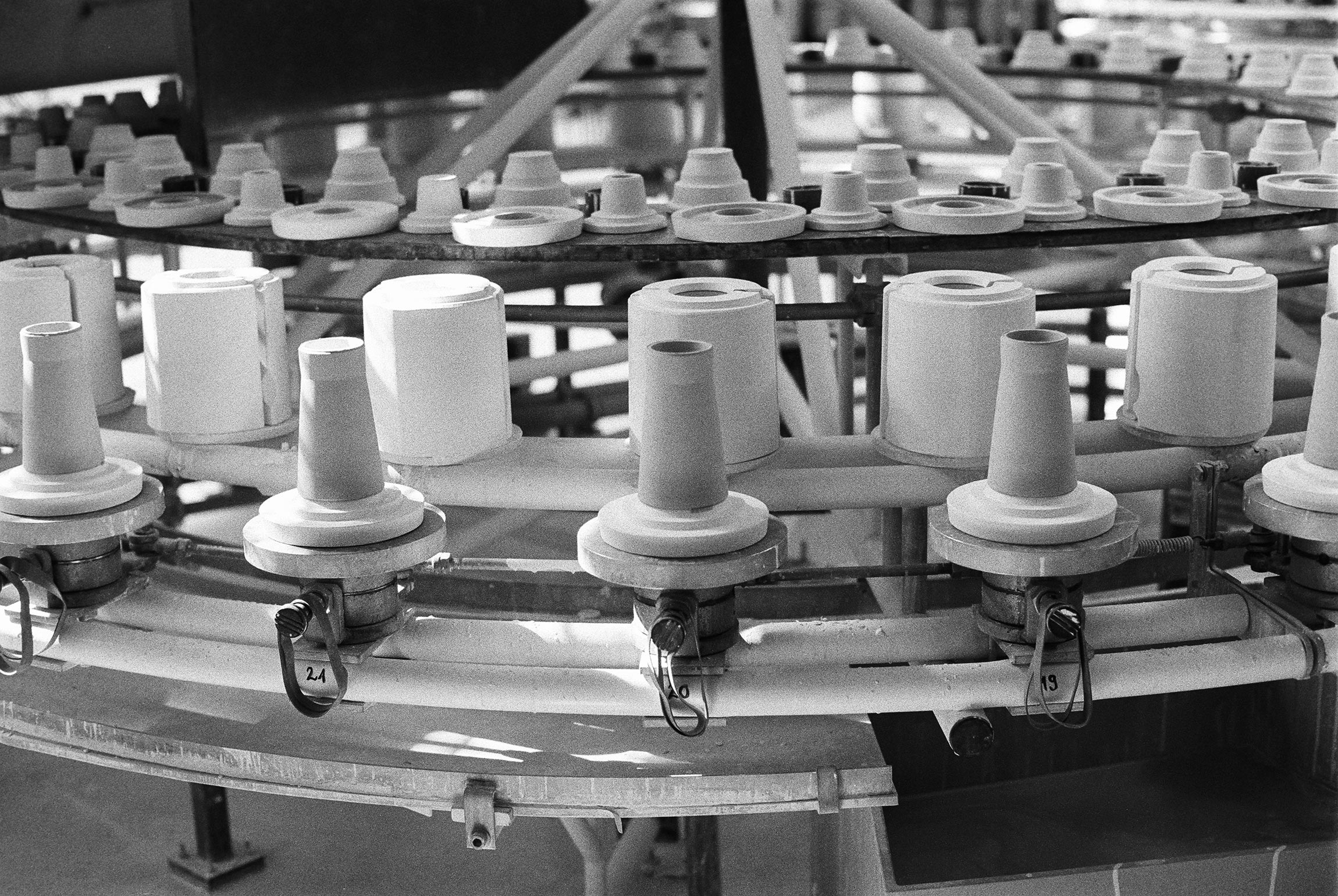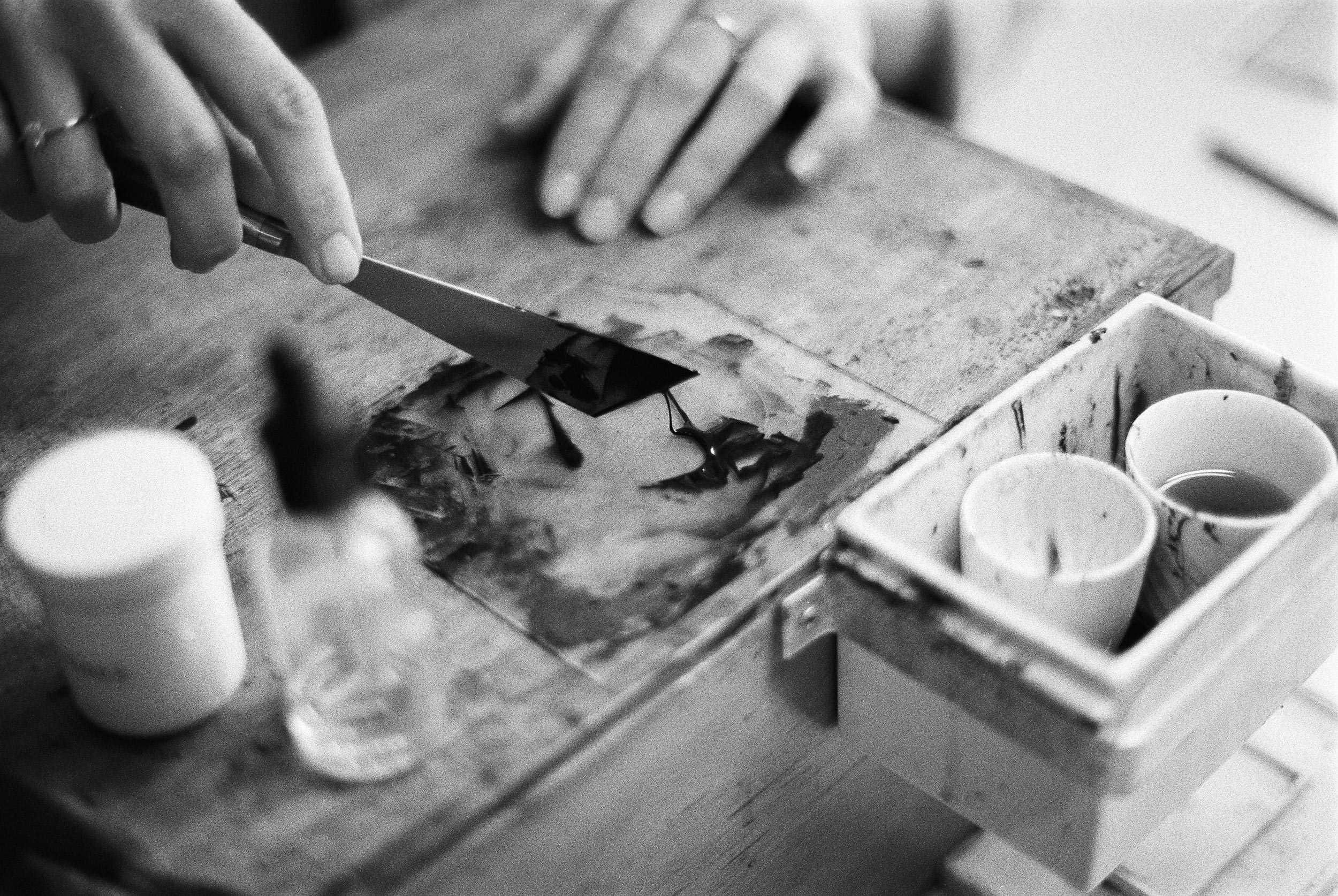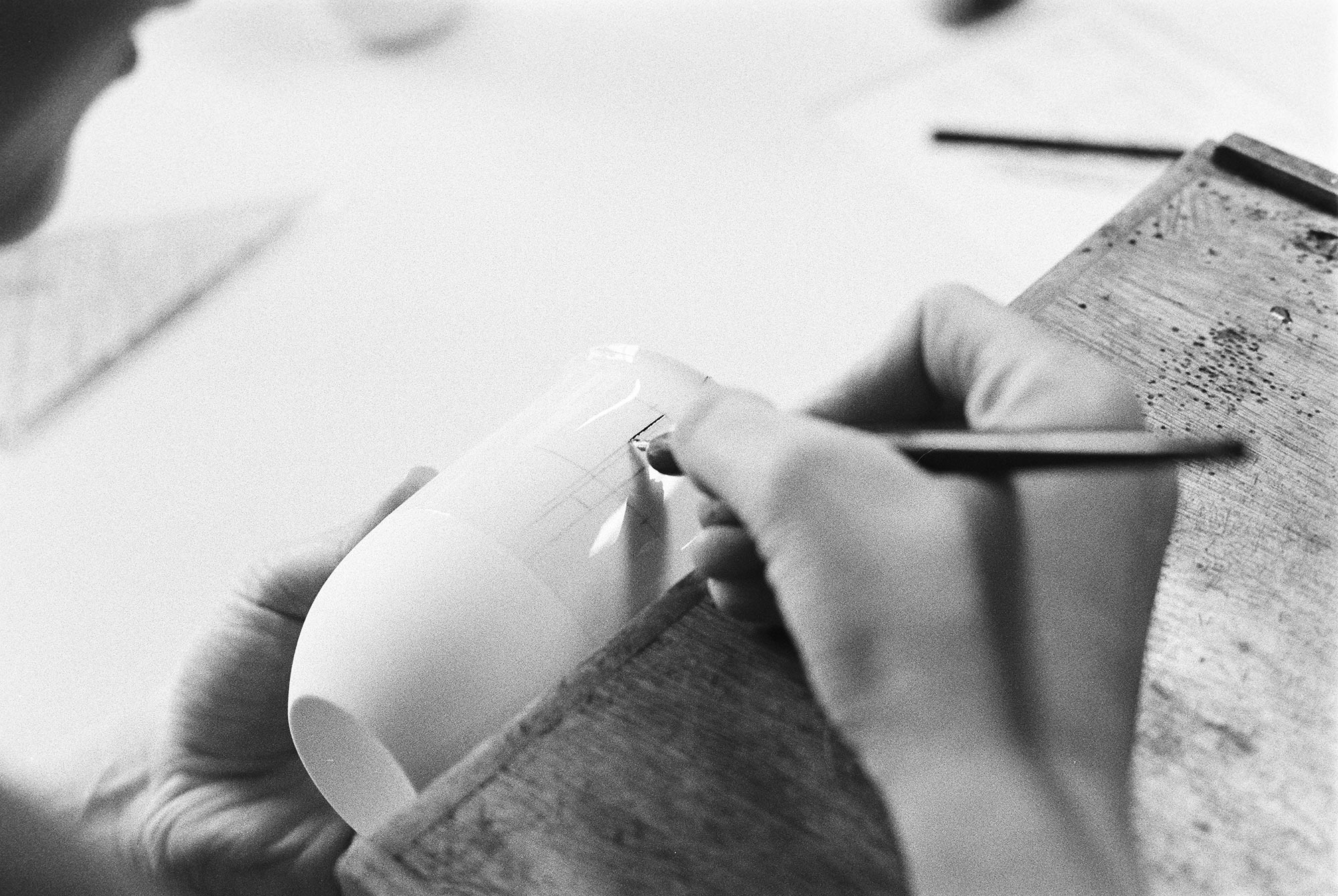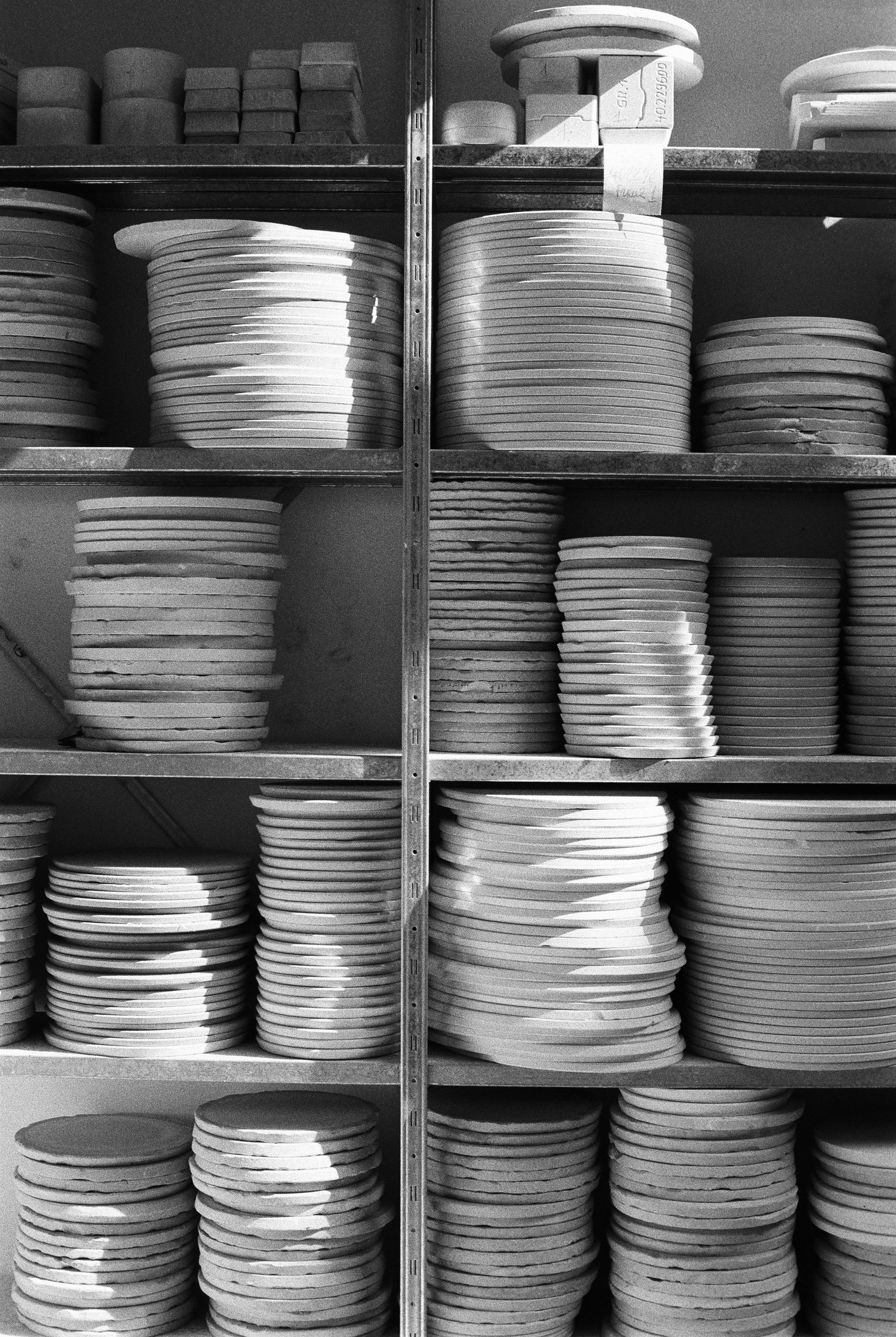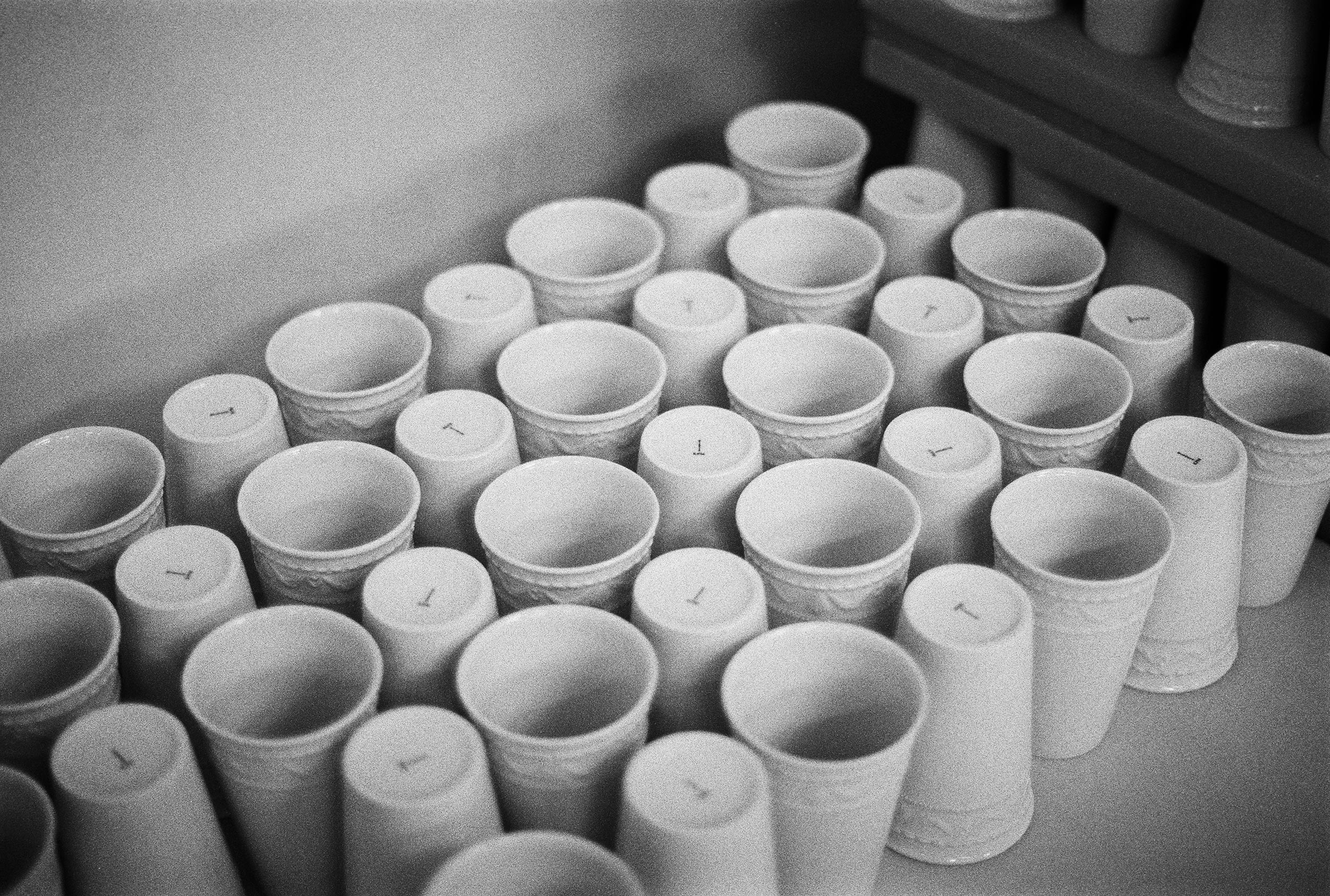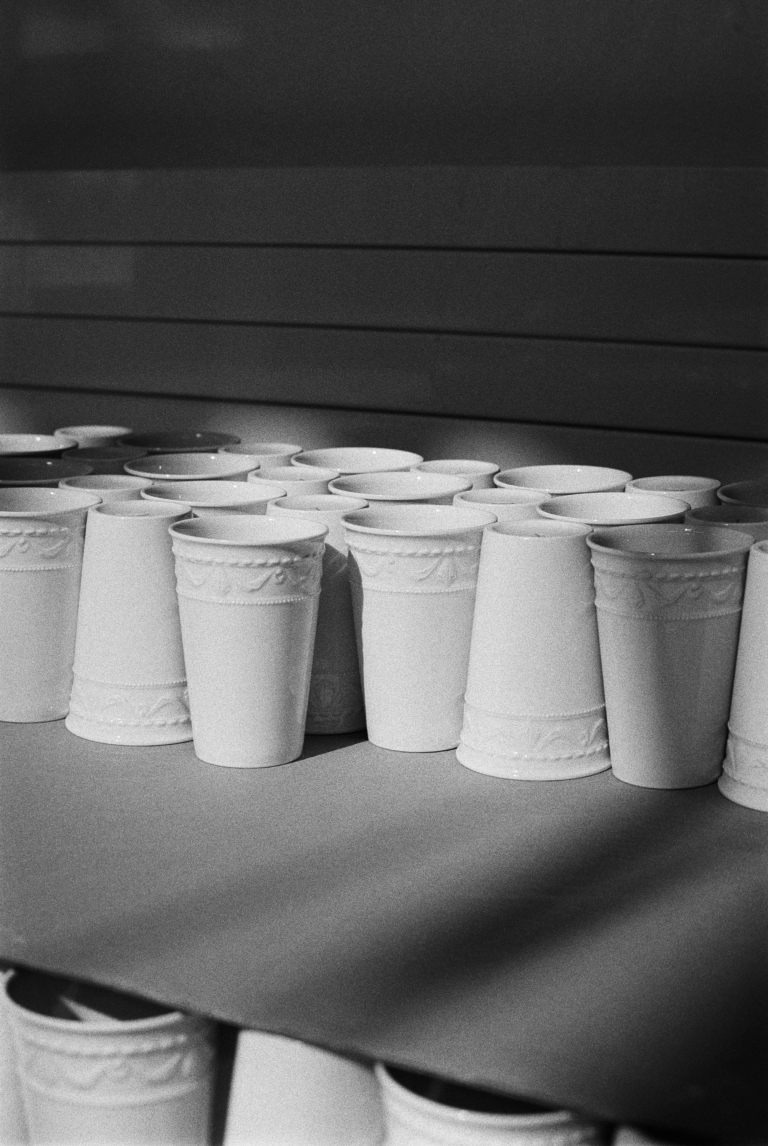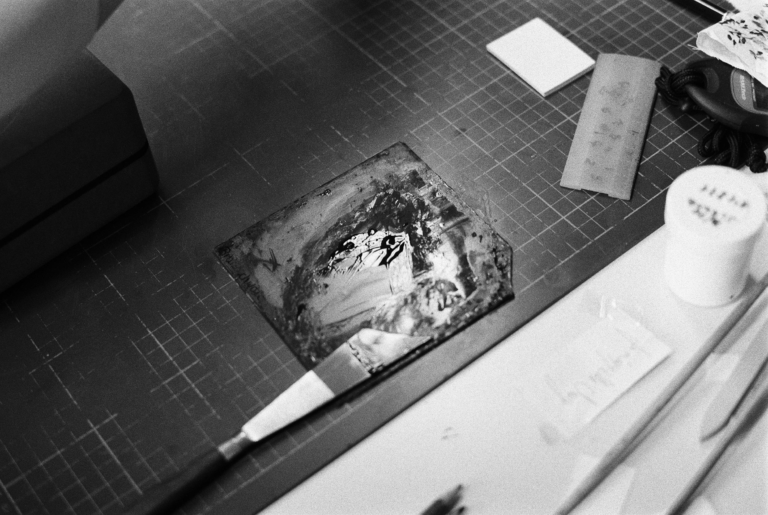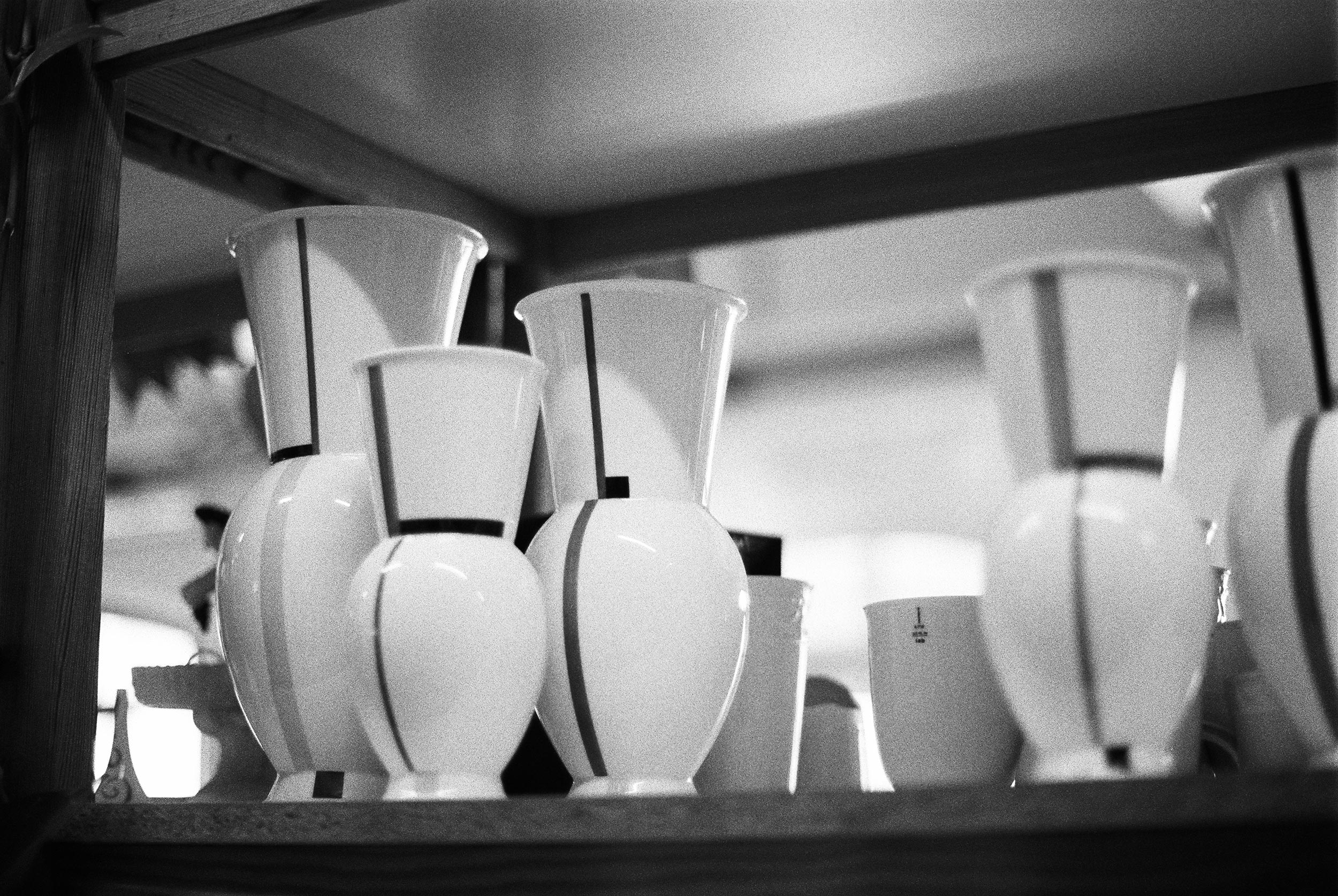KPM
BERLIN
Pristine White and Delicate Lines
The White Gold of Königliche Porzellan-Manufaktur
A visit to the historic halls of the white gold—that’s how the Königliche Porzellan-Manufaktur (KPM Berlin) calls its finest porcelain, which they have been producing in the German capital for over 255 years. The motto Made To Stay encapsulates the manufactory’s claim to maintain its tradition, create lasting values and style.
A history, begun in 1763, that has been shaped by exciting epochs and decades. From Rococo to Art Nouveau, from the clear design language of the Bauhaus to contemporary designs—KPM’s decor range is remarkable and diverse. Even today, all designs can still be found in the store. Who else has such a timeless portfolio?
But how is porcelain made? The production is complex and requires an extraordinary amount of experience and patience. About half of the porcelain mass consists of kaolin and a quarter each of feldspar and quartz. Quartz, in combination with other raw materials, is primarily responsible for the strength of the porcelain. Feldspar enables the densification—sintering—of the body and makes a decisive contribution to the transparency of the porcelain. The process: Based on an artist’s drawing, a modeler creates a first plaster model on a scale of 1:1 (this model is called a maquette). After the maquette, a second model is made, which is about 16 percent larger. This is necessary to compensate for the drying and firing shrinkage of the porcelain mass—because once the water is gone from the mass, it shrinks. This model is also freely formed by hand with the highest level of craftsmanship. Around the model, the so-called setter builds a multi-part working mold from plaster. With it, the first patterns are made from porcelain. A master mold is made from the final adjusted model. It provides the basis for the plastic devices.
But how is porcelain made? The production is complex and requires an extraordinary amount of experience and patience. About half of the porcelain mass consists of kaolin and a quarter each of feldspar and quartz.
For very complex figures, the molds can even consist of more than 80 individual pieces. This can be better visualized using the example of a coffee pot. This consists of the body, the spout, a handle, the lid and the knob on it. These parts are produced individually and assembled later. An object consisting of several individual pieces must be produced quickly and assembled while still wet. In the process, the seams are neatly plastered so that they are no longer visible later. The assembled object is finally plastered again with brushes and sponges. In the process, any irregularities caused by plaster molds are also reworked. As long as the mass is wet, the porcelain can still be cut. After a quality control, the ware is now fired in the first firing—the annealing firing—at 980° Celsius. The firing removes the remaining water from the body. The organic components escape and the body gains significantly greater strength. This is followed by the blue dipping. In this process, the porcelains are dipped in an organic blue color, which later burns off completely during the second firing. It makes the finest defects visible, which are invisible to the eye.
SINCE
1763
Only flawless pieces now receive the mark of the Königliche Porzellan-Manufaktur Berlin, the cobalt blue scepter with the letters KPM. With the exception of flatware, all porcelain pieces are dipped by hand into a tub filled with glaze. The receptivity of the body and the immersion time determine the thickness of the glaze layer and its dispersion. At a temperature of approximately 1420° Celsius, the porcelain is sintered and the body shrinks to the size of the maquette—the original plaster model on a scale of 1:1. In addition, the porcelain receives its final physical properties. One of the special features of KPM porcelain is to provide the top cups with a glazed mouth rim in a further work step. For this purpose, the cup is glazed again before a second good firing.
Particularly fascinating are the fine works at KPM, such as porcelain painting and the application of polished gold. The decorations in the style of naturalistic flower painting in particular have helped establish the manufactory’s artistic reputation. They are painted freely by hand and are always unique. Only the theme and arrangement of the motif are fixed, the design is determined by each painter. Hand painting has been marked with an exclusive painter’s mark, the orb, since 1832. Gilding is done with 24-carat polished gold, consisting of finely powdered, real gold, which is either polished millimeter by millimeter to a high gloss with an agate pin and, in the case of elaborate decorations, is often artistically engraved, or is polished to a matt gloss with sea sand or a glass fiber brush. Since 1803, colorfully decorated porcelain has been given an additional mark in on-glaze color. Painter’s marks also changed over time.
Today, the stamp in the form of an orb is usually placed next to the scepter. The color of the imperial orb differs depending on the type of decoration. In red, the orb marks all decorations of floral painting, colorfully staffed figures and landscapes. In green, the orb is used for all decorations without flowers. In blue, the orb is stamped for all decors in sharp fire colors. These colors are fired at a very high temperature and sink into the melting glaze. After firing, they lie protected in the glaze layer and are dishwasher safe. In black, the orb represents a printed decoration, such as is used for company logos.
In addition to marking decorated porcelain with the orb, there are small handwritten marks on the undersides of the porcelain. Each porcelain painter has his personal mark with which he signs the porcelain he has decorated. Each hand-painted porcelain is unique, marked by the handwriting of the painter.
During its history, KPM has produced a wide variety of service ware, figurative porcelain, pipe bowls and lithophanes. Today, the manufactory draws from a constantly growing repertoire of more than 150,000 shapes. Some of them have been produced unchanged since the founding of the manufactory 250 years ago.
Kurland was a completely new aesthetic in a classicist form language and the name Service mit antiker Kante (Service with antique edge)—which later was renamed Kurland—in honor of its namesake.
The Kurland design is probably one of the most famous by KPM—truly an icon. In 1790, the Duke of Kurland commissioned the Königliche Porzellan-Manufaktur Berlin to design a dinner service. After the Rococo with its shell and tendril work, the reversion to antiquity became the dominant stylistic element around 1770. The result was a completely new aesthetic in a classicist form language and the name Service mit antiker Kante (Service with antique edge)—which later was renamed Kurland—in honor of its namesake. In 2018, the striking classicist edge was transferred to a contemporary to-go cup.
Bauhaus was a significant period of KPM’s creative work. In 2019, a re-edition of the porcelain classics was launched on the occasion of the 100th anniversary of Bauhaus. The designs are by Marguerite Friedlaender, who set important impulses from 1929 for the Bauhaus movement. After her apprenticeship at the Bauhaus school, she worked in the pottery, became a workshop master and later became the first female pottery master in Germany to lead the ceramics department at the Burg Giebichenstein School of Arts and Crafts. From 1929, she was in charge of the newly established porcelain workshop and designed the Halle coffee and tea service for KPM Berlin—followed by a vase with the same name. Quite typical of the Bauhaus period, the designs follow the desire for functional clarity and technical purpose—without unnecessary details, the rounded body and designs based on geometric shapes make the Halle Vase a highly functional design object.
in partnership with KPM Berlin
shot on location in BERLIN
on 35 MILLIMETER FILM


